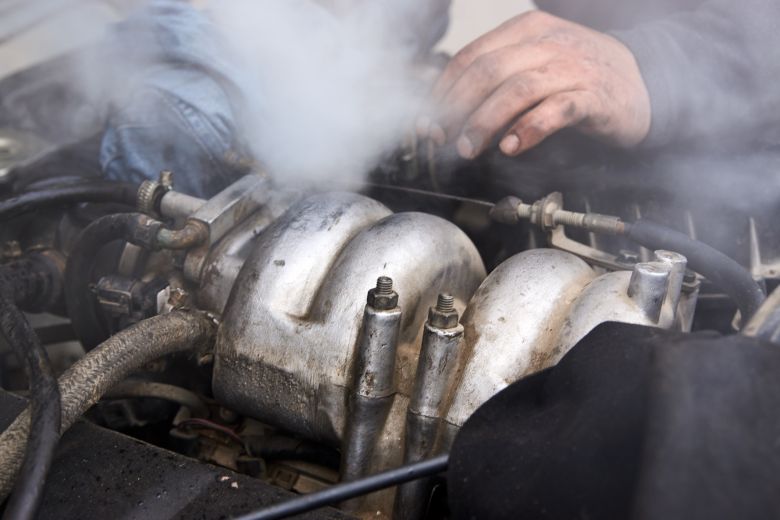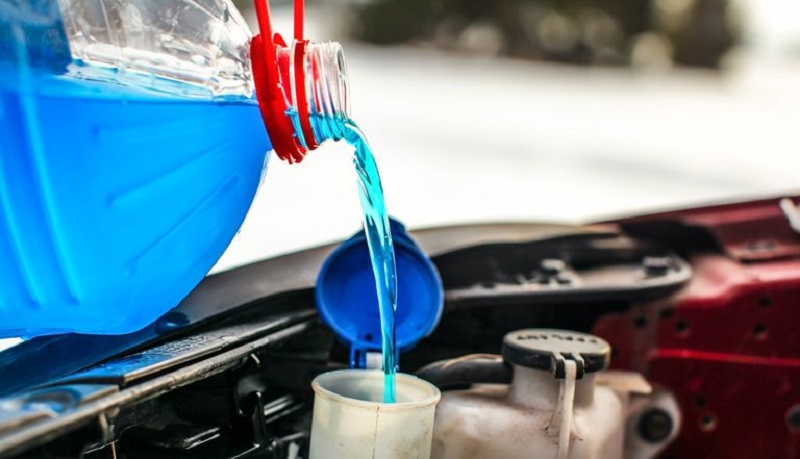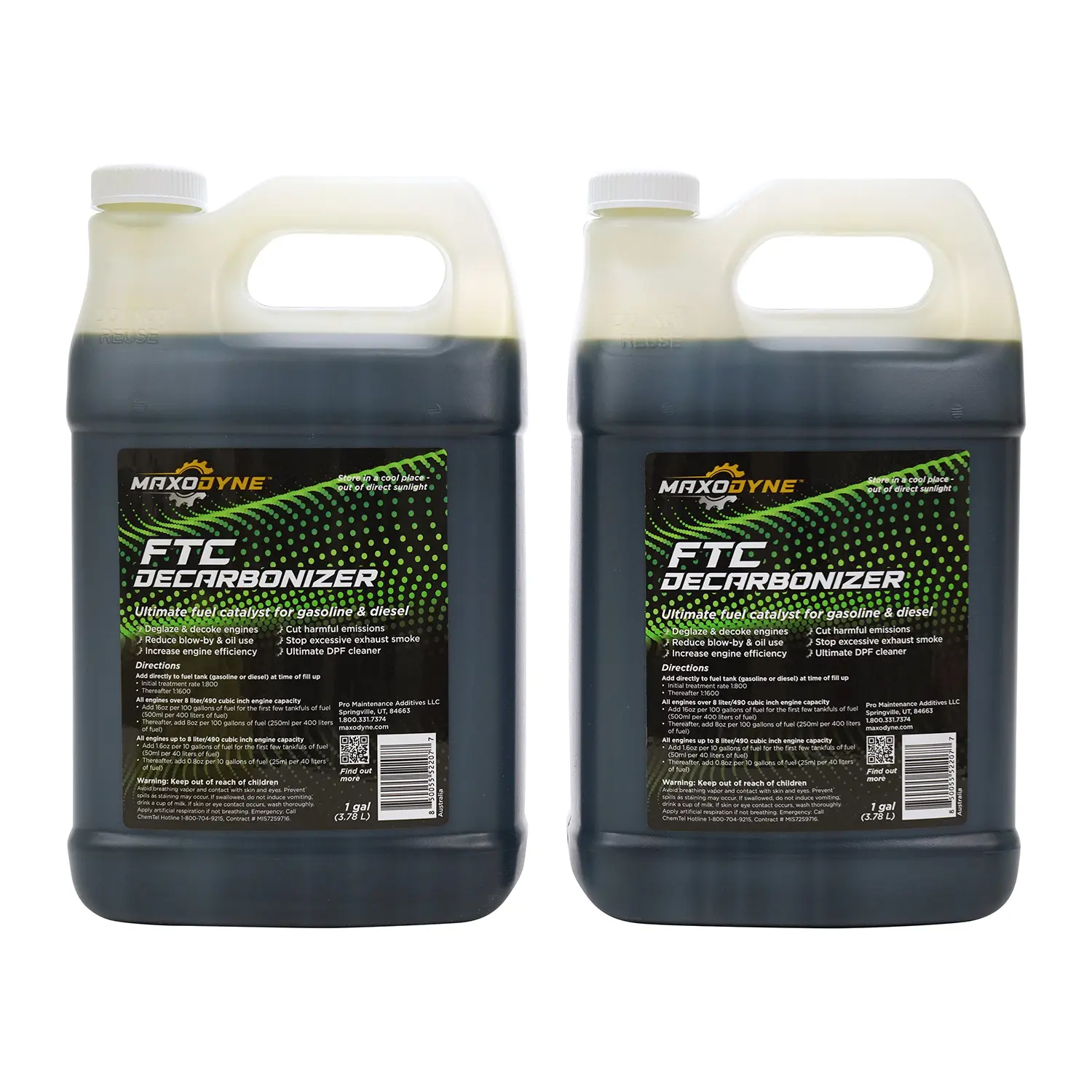Can Low Coolant Cause Smoke
Yes, low coolant can cause smoke if your vehicle overheats or leaks coolant into the combustion chamber. Engine smoke often indicates a serious issue that requires immediate attention.
A well-maintained cooling system is vital for the proper operation of your vehicle’s engine. Low coolant levels can lead to excessive heat, which may cause the engine to smoke as a result of overheating components or leaking coolant being vaporized.
This smoke is typically white or gray in color and may be accompanied by a sweet smell if the coolant burns. Immediate steps should be taken to diagnose and resolve any causes of low coolant to prevent potential engine damage. Ensuring your vehicle’s coolant is at the appropriate level and your cooling system is free of leaks can mitigate the risk of smoke and preserve engine integrity. Regular checks of the coolant reservoir and the engine’s temperature gauge can help identify issues early, maintaining the overall health of your car’s engine.
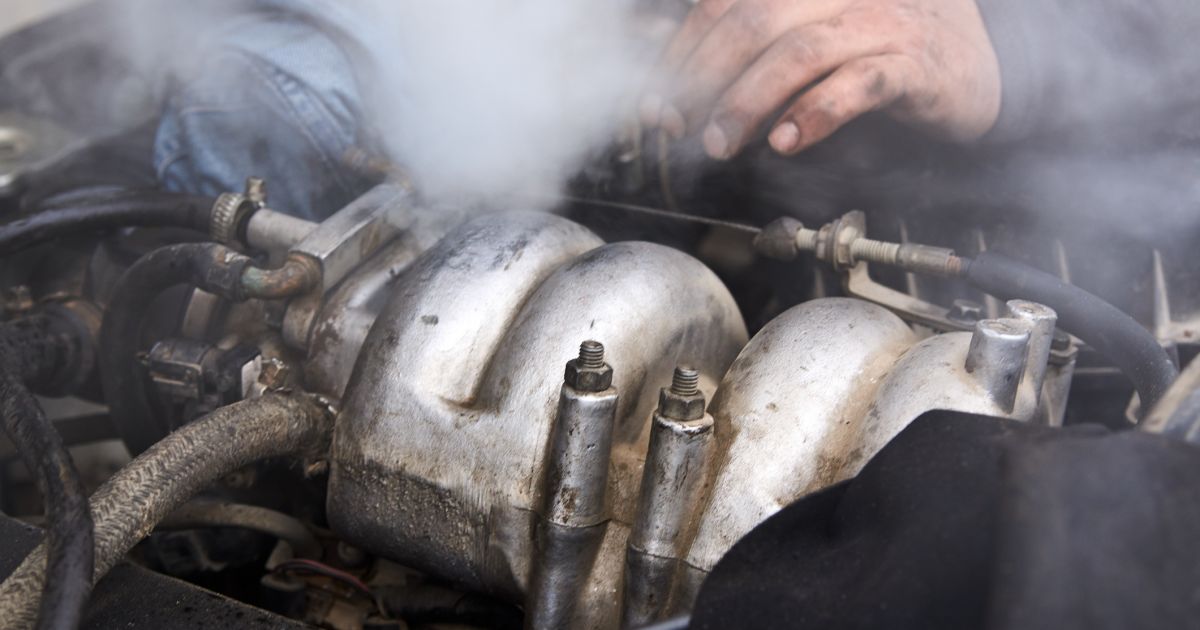
Credit: www.rac.co.uk
Symptoms Of Low Coolant In Vehicles
Understanding your vehicle’s health starts with recognizing the symptoms of low coolant. Coolant plays a pivotal role in regulating your engine’s temperature. A drop in its level may lead to serious issues, including potential engine damage. Here are critical signs to look out for:
Visible Smoke Emissions
Spotting smoke from the exhaust or under the hood can be alarming. Normally, this smoke might be white and come with a sweet smell, a tell-tale signal of coolant burning within the engine compartment. Consider the following points:
- White exhaust smoke: It is not normal. It could mean coolant leaks into the combustion chamber.
- Smoke under the hood: Indicates a possible leak onto hot engine parts, which then evaporates.
Engine Overheating Signs
An engine running hotter than usual is a red flag. The gauge on your dashboard will help you monitor this. Symptoms to be aware of include:
- Temperature warning light: Illuminates when the engine temp is too high.
- Thumping sounds: Might suggest boiling coolant in the cooling system.
- Steam: Popping out from under the hood is another critical indicator.
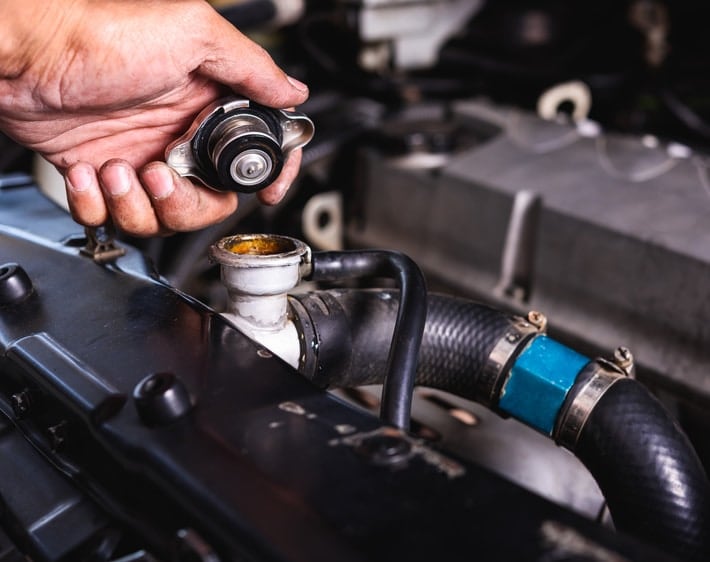
Credit: www.firestonecompleteautocare.com
Correlation Between Coolant Levels And Smoke
The relationship between coolant levels and smoke from a vehicle is more direct than many might suspect. Understanding this dynamism is crucial to maintaining a car’s health and safety. Low coolant levels can lead to significant engine damage, indicated by smoke emissions, which is a clear sign that your vehicle needs attention.
Function Of Coolant In Engine Temperature Regulation
The coolant, also known as antifreeze, plays a pivotal role in an engine’s wellbeing. It circulates through the engine to absorb excess heat. This prevents the engine from overheating.
- Transports heat away from the engine block
- Ensures optimal engine performance
- Prevents boiling over and freezing
How Low Coolant Leads To Smoke Production
When an engine’s coolant level drops, it can’t absorb and dispel heat effectively. This can cause the engine to overheat.
Smoke production is a symptom of this overheating. If the heat continues unchecked, it may lead to engine parts burning or emitting steam.
| Coolant Level | Engine Temperature | Smoke Production |
|---|---|---|
| Optimal | Stable | None |
| Low | High | Visible |
- Low coolant levels result in poor heat absorption.
- Continuous high temperatures may burn engine parts.
- Steam or smoke warns of serious engine issues.
Types Of Smoke And Diagnostic Clues
Understanding the types of smoke from a car can help diagnose issues. A low coolant can cause smoke. The color and smell of smoke can be key clues. It’s important to know if it’s actually smoke or just steam. This knowledge can prevent major damage to a car.
Color And Smell As Indicators
The color and smell of smoke can point to different problems:
- White smoke: Often steam from boiling coolant. Has a sweet smell.
- Blue smoke: Burnt oil. Indicates oil leaks into combustion chambers.
- Gray smoke: Can be harder to diagnose. May suggest transmission fluid burning or oil burning.
- Black smoke: Too much fuel in the engine. Suggests a fuel injection issue.
Differentiating Between Steam And Smoke
Smoke tends to linger and has a distinct smell. Steam disappears quickly and is odorless:
- Steam: Comes with a hot engine or when coolant leaks onto something hot. Typically seen when the weather is cold.
- Smoke: Smoke from low coolant is rare but indicates a serious issue.
Troubleshooting Low Coolant Issues
Troubleshooting low coolant issues is vital for your vehicle’s health. Low coolant can lead to smoke and even engine damage. This post guides you on how to pinpoint the problem and prevent potential damage. Let’s dive into recognizing where issues might be with a practical approach.
Inspecting For Leaks
Leaks are common culprits when coolant levels drop. Visually inspect all areas where coolant may escape. Check under the vehicle for puddles, which are tell-tale signs. Look for wet spots or drips on the engine itself. Areas to focus on include the:
- Water pump: Spot for tell-tale weep holes leakage.
- Engine block: Check for cracks or seams dripping coolant.
- Head gasket: Look for white smoke from the exhaust, indicating a leak.
Checking Coolant Reservoir
The coolant reservoir is a window into coolant health. A quick glance reveals the coolant level. Always check when the engine is cold. Below-minimum levels may signify a leak or evaporative issues. Top up if needed but seek a mechanic’s advice to identify why it’s low.
Assessing The Radiator And Hoses
The radiator and hoses are vital for cool circulation. Inspect them for signs of wear, tear, or damage. Look for:
- Splits in hoses: These can lead to significant leaks.
- Fragile radiator fins: Compromised fins can affect cooling.
- Blockages: Debris in hoses or the radiator can impede coolant flow.
If these parts are damaged, coolant can escape, get low, and cause smoke. Replacing any damaged parts quickly is essential to prevent further damage.
Preventive Measures And Maintenance Tips
Vehicle maintenance is crucial both for safety and longevity of your car.
Understanding how low coolant can cause smoke is important.
It signals an overheating engine, which can lead to severe damage.
Read on for preventive measures and maintenance tips to keep your car running smoothly.
Regular Coolant System Checks
Regular inspections of your coolant system are a must.
These checks reveal leaks and wear in the system.
Twice a year, inspect hoses, the radiator, and connections.
This will prevent future engine overheating and unwanted smoke.
Proper Coolant Mixture And Levels
Maintain the right mix of water and antifreeze for top performance.
This balance ensures good boiling and freezing points of the coolant.
Always keep coolant at optimal levels.
Check levels with every oil change for safety.
Professional Engine Diagnostics
Professional checks help catch hidden issues.
Tools like OBD-II scanners pinpoint the exact problem.
A mechanic can check for serious problems.
They will fix issues before they lead to smoke and breakdowns.
Maintain your car with these tips.
This will help it stay healthy and smoke-free.
When To Seek Professional Help
Seeing smoke from your car can be alarming. It often points to overheating due to low coolant. This can damage your engine. It’s time to seek professional help if you notice ongoing issues. A skilled mechanic can save your car from further damage. Don’t wait if you see the following signs:
- Thick white or blue smoke from the exhaust while driving.
- Coolant level drops quickly with no visible leaks.
- Overheating warnings on the dashboard, even after refilling coolant.
- The smell of sweet syrup or burnt oil, suggesting a coolant leak inside the engine.
- Unusual noises or poor car performance.
Crucial Timing For Engine Health
Act fast when you see signs of low coolant.
Check coolant levels regularly. If they are low, refill as needed. Always use the right type of coolant. Early intervention can prevent major engine damage. Ignoring the problem can lead to costly repairs. Protect your car’s engine by monitoring the coolant levels. Seek help at the first sign of trouble.
Selecting The Right Mechanic Or Service Center
Choose a reputable mechanic or service center with care.
- Look for certified professionals with good reviews.
- Ensure they have experience with your car model.
- Ask friends or family for recommendations.
- Check for warranties on repair work.
A good mechanic will diagnose and fix the issue efficiently. They use quality parts and fluids for your car. A reliable service center offers peace of mind. Your car stays healthy for the road ahead.
Frequently Asked Questions Of Can Low Coolant Cause Smoke
Does Low Coolant Lead To Engine Smoke?
Low coolant can cause the engine to overheat, which might result in smoke. The smoke typically comes from overheated parts or leaked fluid burning off. It’s crucial to address low coolant to prevent potential engine damage.
What Color Smoke Indicates Coolant Issues?
White smoke often signifies coolant issues, especially if it has a sweet smell. This type of smoke can indicate a coolant leak that’s being vaporized in the combustion chamber. Immediate attention to the vehicle is advisable.
Can Low Coolant Cause Smoking From The Exhaust?
Yes, low coolant may cause white, sweet-smelling smoke from the exhaust. This is an indicator of coolant entering the combustion chamber, often due to a compromised head gasket or cracked engine block.
How To Diagnose Smoke Caused By Low Coolant?
Check for low coolant levels in the reservoir and look for any external leaks. Observe the exhaust smoke color and smell. For a precise diagnosis, a mechanic can perform a compression test or use a coolant system pressure tester.
Conclusion
Understanding the link between low coolant levels and potential smoke from your vehicle is key. Timely checks prevent costly repairs and ensure road safety. Remember, regular maintenance is your best defense against engine smoke. Stay vigilant, keep that coolant topped, and drive with confidence.

